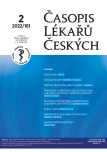Liver tests
Authors:
Václav Šmíd
Authors‘ workplace:
4. interní klinika – klinika gastroenterologie a hepatologie 1. LF UK a VFN v Praze
Published in:
Čas. Lék. čes. 2022; 161: 52-56
Category:
Review Article
Overview
Liver function tests are among the most determined biochemical parameters, and it is essential that their interpretation is always performed correctly. The presence of liver disease is indicated not only by the well-known basic panel of liver function tests (bilirubin, ALT, AST, GGT and ALP), but also by other biochemical parameters, especially albumin, INR and platelet count. The latter analytes are often overlooked, as is the fact that normal values in the baseline liver test panel do not yet rule out advanced chronic liver disease - liver fibrosis or cirrhosis. In contrast, high levels of liver function tests do not automatically indicate liver failure. Considering the increasing incidence of liver disease as well as the rising mortality from liver causes in many European countries, it is desirable to update the diagnostic algorithm when pathological liver function tests are detected.
Keywords:
Liver function tests – liver – differential diagnosis
Sources
- Asrani SK, Devarbhavi H, Eaton J et al. Burden of liver diseases in the world. J Hepatol 2019; 70(1): 151–171.
- Pimpin L, Cortez-Pinto H, Negro F et al. Burden of liver disease in Europe: epidemiology and analysis of risk factors to identify prevention policies. J Hepatol 2018; 69(3): 718–735.
- Dufour DR, Lott JA, Nolte FS et al. Diagnosis and monitoring of hepatic injury. I. Performance characteristics of laboratory tests. Clin Chem 2000; 46(12): 2027–2049.
- Dufour DR, Lott JA, Nolte FS et al. Diagnosis and monitoring of hepatic injury. II. Recommendations for use of laboratory tests in screening, diagnosis, and monitoring. Clin Chem 2000; 46(12): 2050–2068.
- Donnan PT, McLernon D, Dillon JF et al. Development of a decision support tool for primary care management of patients with abnormal liver function tests without clinically apparent liver disease: a record-linkage population cohort study and decision analysis (ALFIE). Health Technol Assess 2009; 13(25): iii–iv, ix–xi, 1–134.
- Newsome PN, Cramb R, Davison SM et al. Guidelines on the management of abnormal liver blood tests. Gut 2018; 67(1): 6–19.
- Kwo PY, Cohen SM, and Lim JK. ACG Clinical Guideline: Evaluation of Abnormal Liver Chemistries. Am J Gastroenterol 2017; 112(1): 18–35.
- Seyed Khoei N, Wagner KH, Sedlmeier AM et al. Bilirubin as an indicator of cardiometabolic health: a cross-sectional analysis in the UK Biobank. Cardiovasc Diabetol 2022; 21(1): 54.
- Gazzin S, Vitek L, Watchko J et al. A Novel perspective on the biology of bilirubin in health and disease. Trends Mol Med 2016; 22(9): 758–768.
- Adler M, Gulbis B, Moreno C et al. The predictive value of FIB-4 versus FibroTest, APRI, FibroIndex and Forns index to noninvasively estimate fibrosis in hepatitis C and nonhepatitis C liver diseases. Hepatology 2008; 47(2): 762–763.
- Nyblom H, Berggren U, Balldin J et al. High AST/ALT ratio may indicate advanced alcoholic liver disease rather than heavy drinking. Alcohol Alcohol 2004; 39(4): 336–339.
Labels
Addictology Allergology and clinical immunology Angiology Audiology Clinical biochemistry Dermatology & STDs Paediatric gastroenterology Paediatric surgery Paediatric cardiology Paediatric neurology Paediatric ENT Paediatric psychiatry Paediatric rheumatology Diabetology Pharmacy Vascular surgery Pain management Dental HygienistArticle was published in
Journal of Czech Physicians

2022 Issue 2
Most read in this issue
- Liver tests
- Alcohol-related liver disease in medical practice
- Liver elastography
- Diagnostic methods of fatty liver diseases
